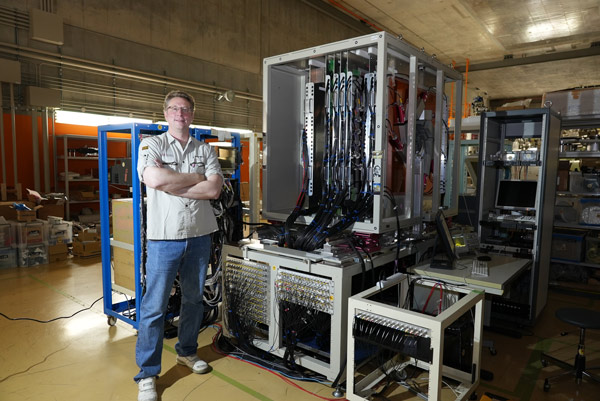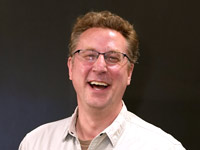Jun. 27, 2023
Magic moments with exotic nuclei
Pieter Doornenbal, Senior Research Scientist
Please describe your research.
I lead research at the RIKEN Nishina Center for Accelerator-Based Science revealing the structure of radioactive isotopes via in-beam gamma-ray spectroscopy. Radioactive isotopes, often called exotic nuclei, do not naturally occur on Earth. But their properties are fundamental to obtain a complete understanding of the forces that form atomic nuclei and hold them together. This is crucial to explaining the abundance of different elements in the Universe.
Describe an exciting, recent finding in your field.
Complete filling of nucleus shells with protons and neutrons at nucleon numbers 2, 8, 20, 28, 50, 82 and 126 yields ‘magic’ numbers. Magic-number isotopes are spherical and very difficult to excite, among other things. Recent experimental results demonstrated that neutron numbers 32 and 34 are also magic in calcium isotopes. It is possible that 40 is a magic number, which is a research topic we’re examining.
When did you join RIKEN?
After obtaining my PhD from the University of Cologne in 2007, I joined RIKEN as a Japan Society for the Promotion of Science fellow. I later became one of RIKEN’s Foreign Postdoctoral Researchers, and was fortunate that a researcher position opened up in 2012.

Pieter Doornenbal with DALI2, Gamma-ray spectrometer.
How has being at RIKEN helped your research?
At the RIKEN Nishina Center for Accelerator-Based Science's Radioactive Isotope Beam Factory (RIBF), we have access to the most powerful machine of its kind. Equally important is that young researchers are encouraged to put forward scientific proposals and apply for machine time with their own ideas.
What technologies do you use?
The RIBF’s Superconducting Ring Cyclotron accelerates stable isotopes to an energy of 345 MeV per nucleon. Accelerating the isotope 238U corresponds to an energy for which the cyclotron in Wako was listed in GUINNESS WORLD RECORDS™ on April 11, 2022, as 'Highest beam energy cyclotron'. Besides that, RIBF offers world-leading primary-beam intensities that help produce many exotic nuclei.
What has been your most memorable experience at RIKEN?
While it’s not easy to pick a single event, I enjoy after-beam-time parties. Collaborators from all over the world come to the RIBF for beam time. This is typically very intense, as beam-time schedules are tight. Experiments are carried out night and day, and on weekends. Once the experiment is over, the stress levels drop, and one would typically gather in a local izakaya, sometimes with up to 40 people, to celebrate a successful experiment. Often this leads to new experimental ideas!
What do you wish you had known before coming to Japan?
Prior to coming to Japan, I had two concerns: a rather strict working atmosphere, and hot and humid summers. For the former, I was quickly relieved that this wasn’t the case at all, while for the latter, neck towels came in very handy.
Rate this article

